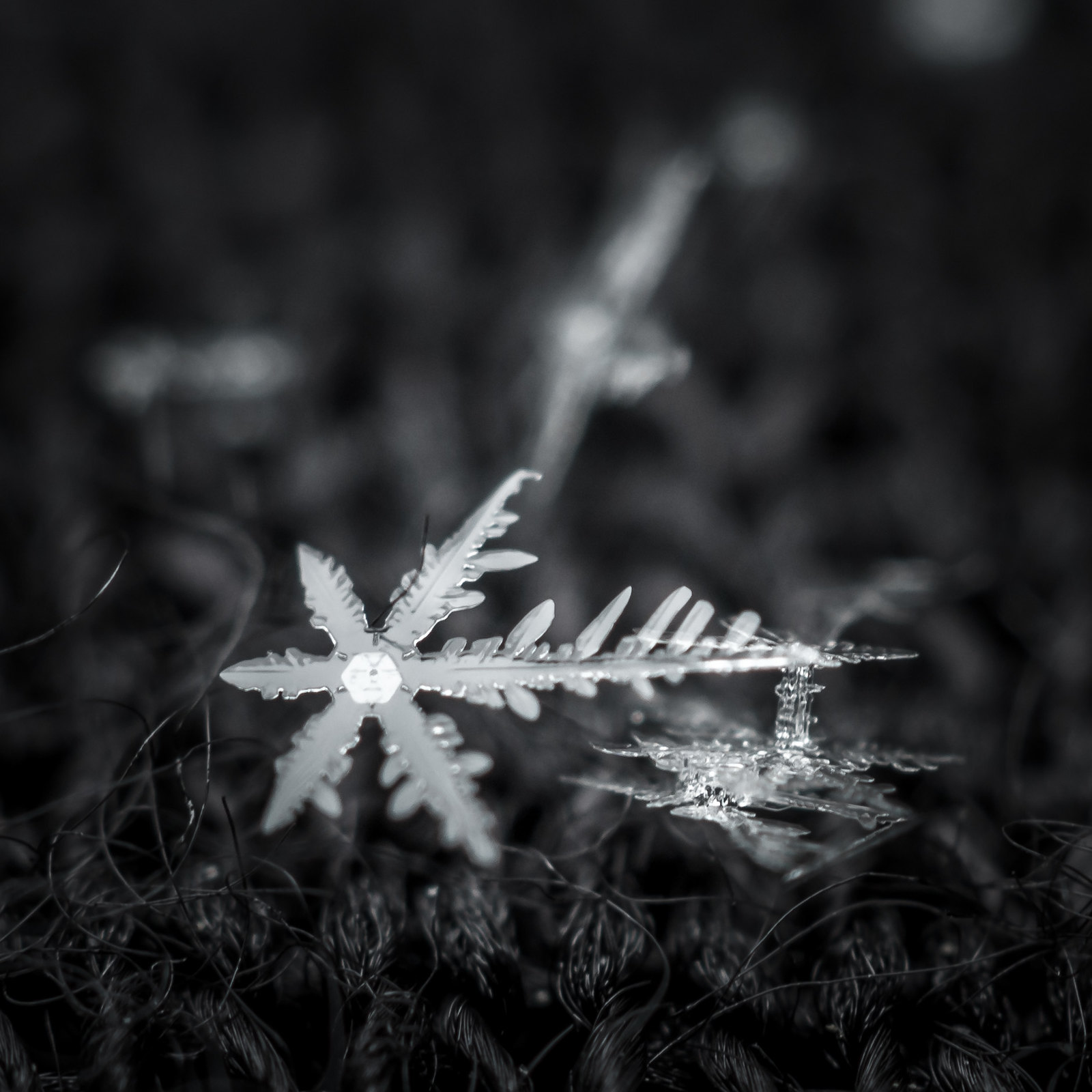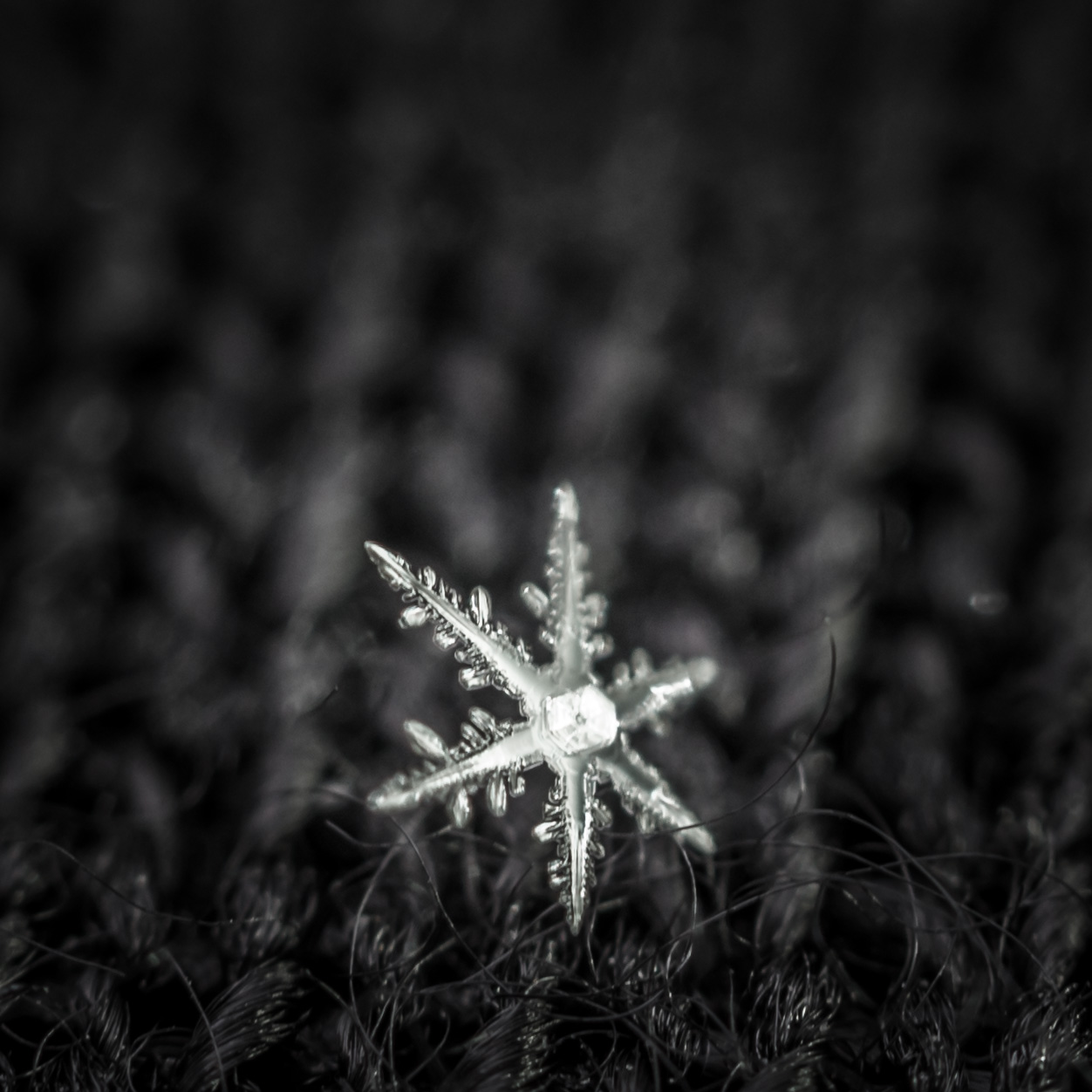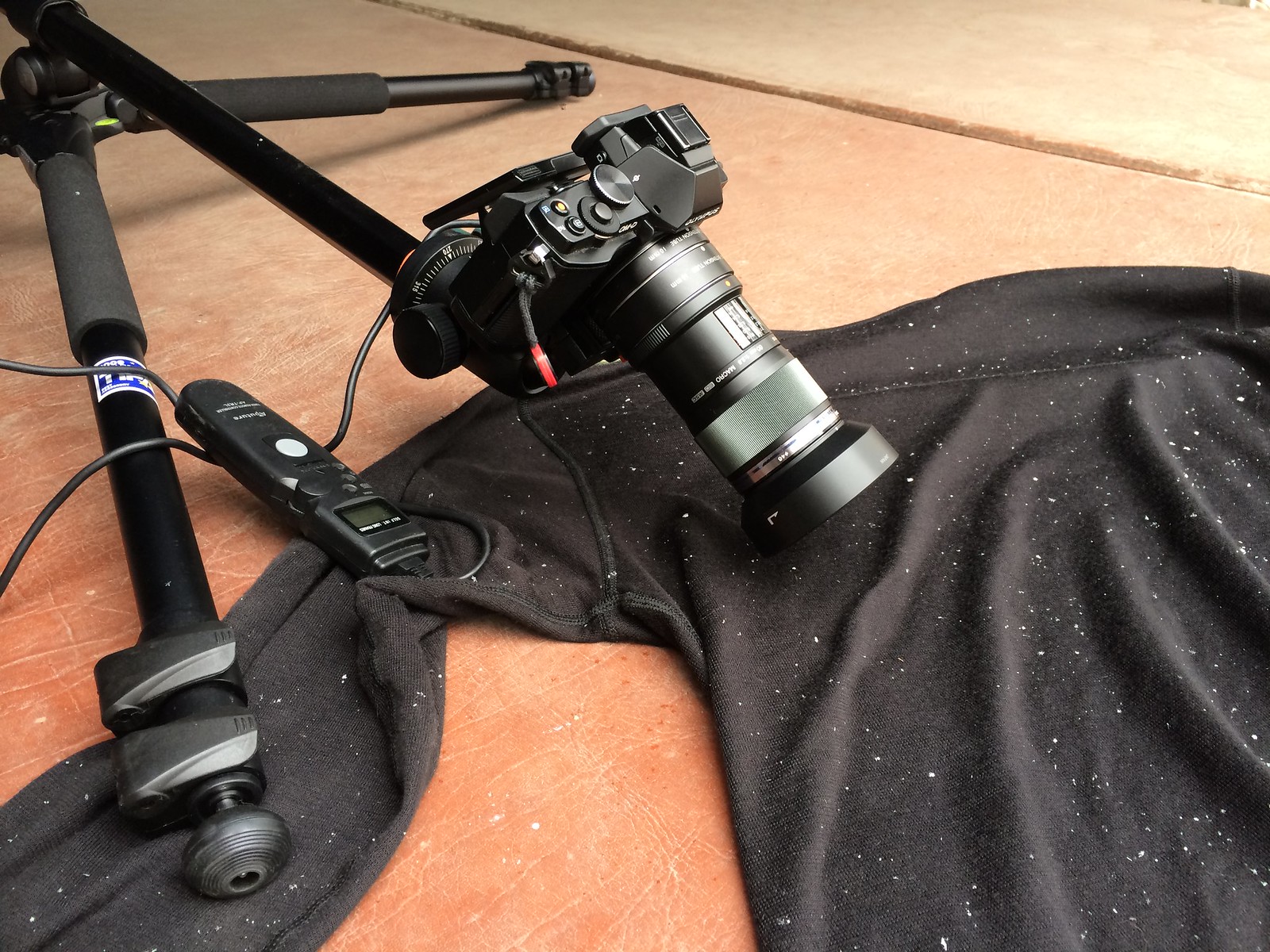After reading Alexey Kljatov’s snowflake photo technique article I decided to give it a try myself.
A few thoughts on this first attempt:
- It seems highly dependent on the quality of the flakes that are falling.
- At this level of magnification, what seems like a small shift in distance quickly amounts to shooting at 0.5X instead of 1.0X.
- I need a higher powered flashlight or other light source to help highlight the intricate design of the flakes, keep my ISO down, and my shutter speed up.
- Depending on cost I might look into macro rails for the camera. It’s really difficult moving quickly to different snowflakes and getting them in proper focus.
I plan to do a full review of the Olympus 60mm f2.8 Macro lens at a later time, including a supplementary review of the Kenko extension tubes. But in the meantime, here are a couple photos from the first set I took:


And here’s the highly technical setup I was using. That’s a moisture wicking thermal layer for those snowflakes to land on. The Polar Max Acclimate Dry 100% Polyester blend for optimal photo reproduction. Only the best.

2 Trackbacks